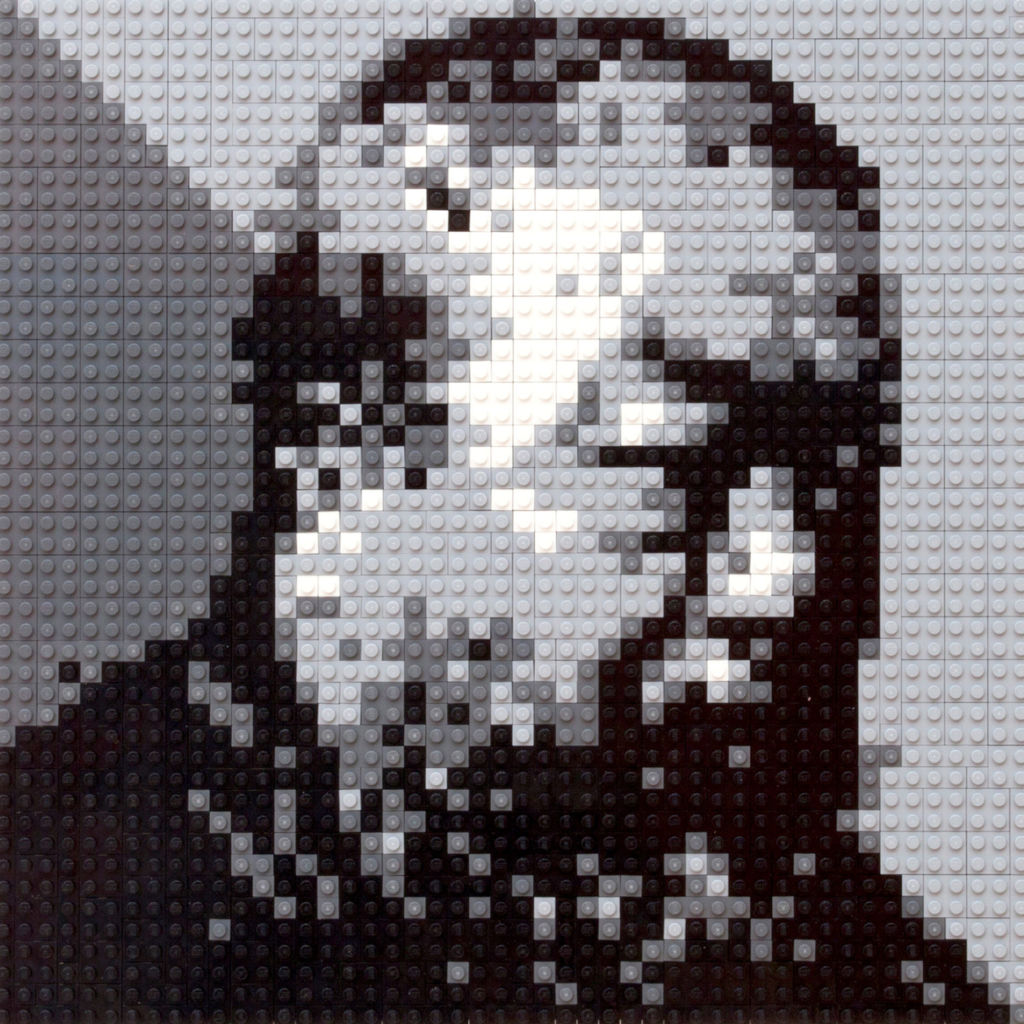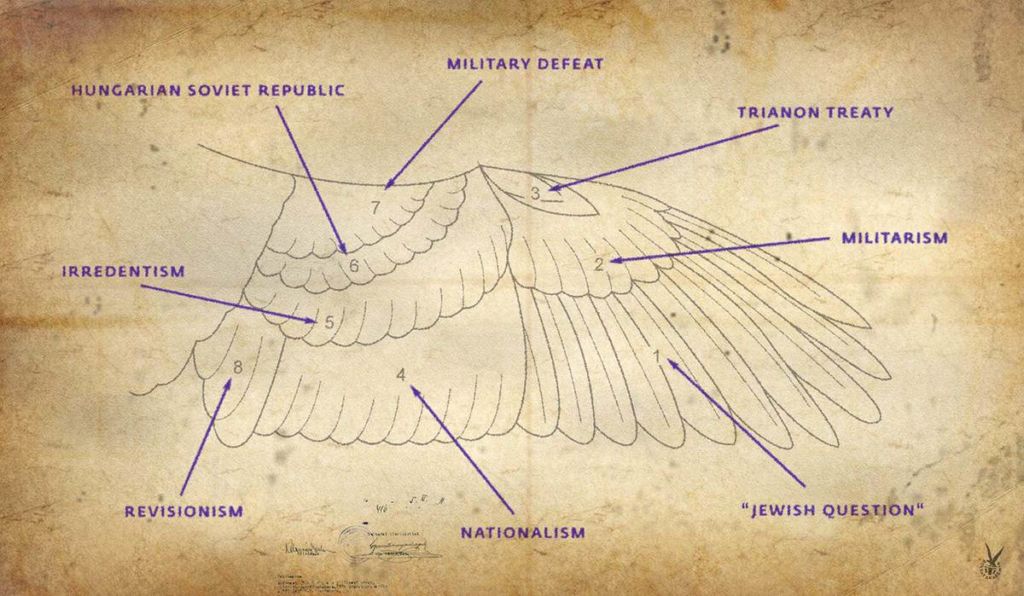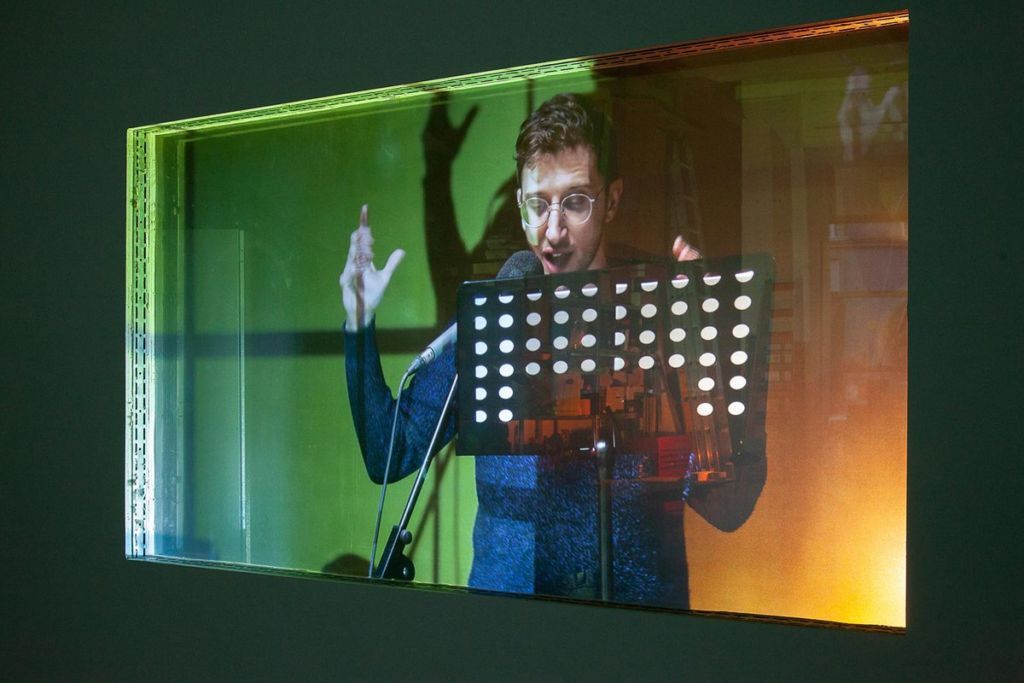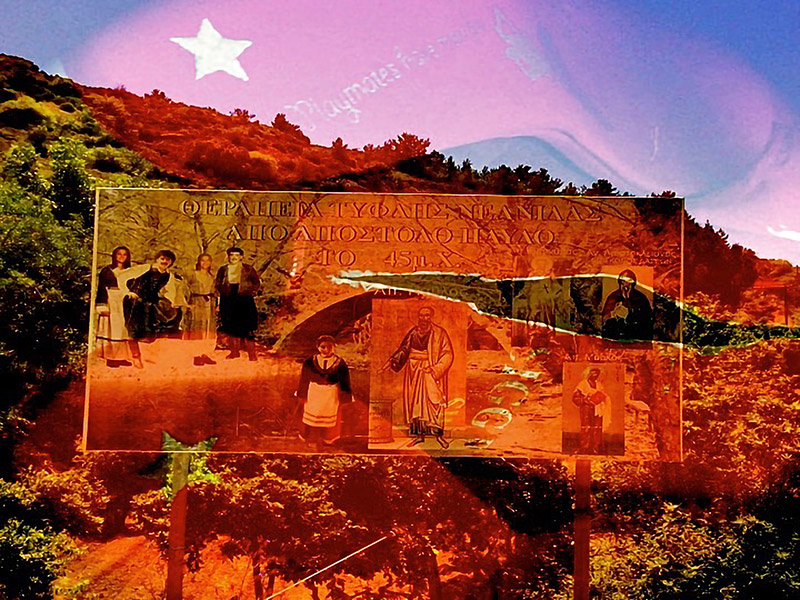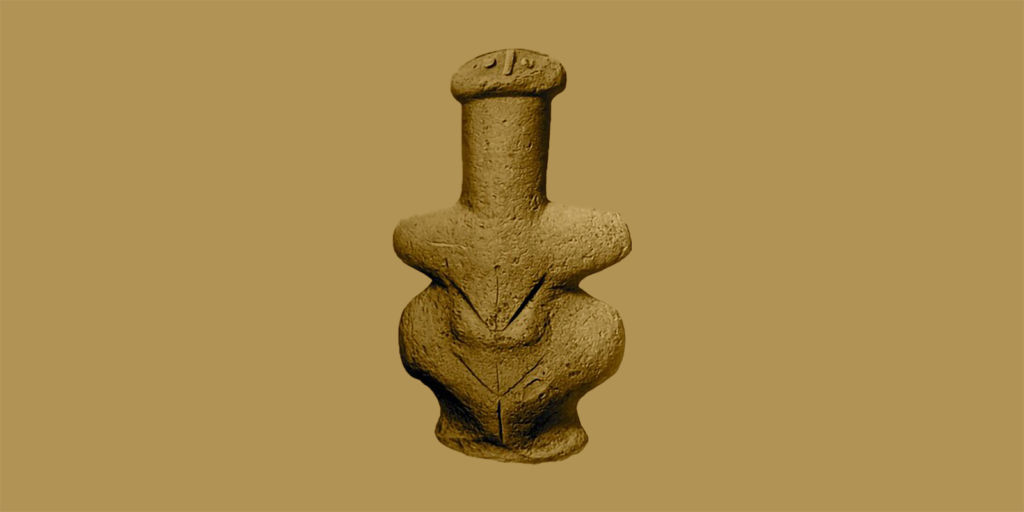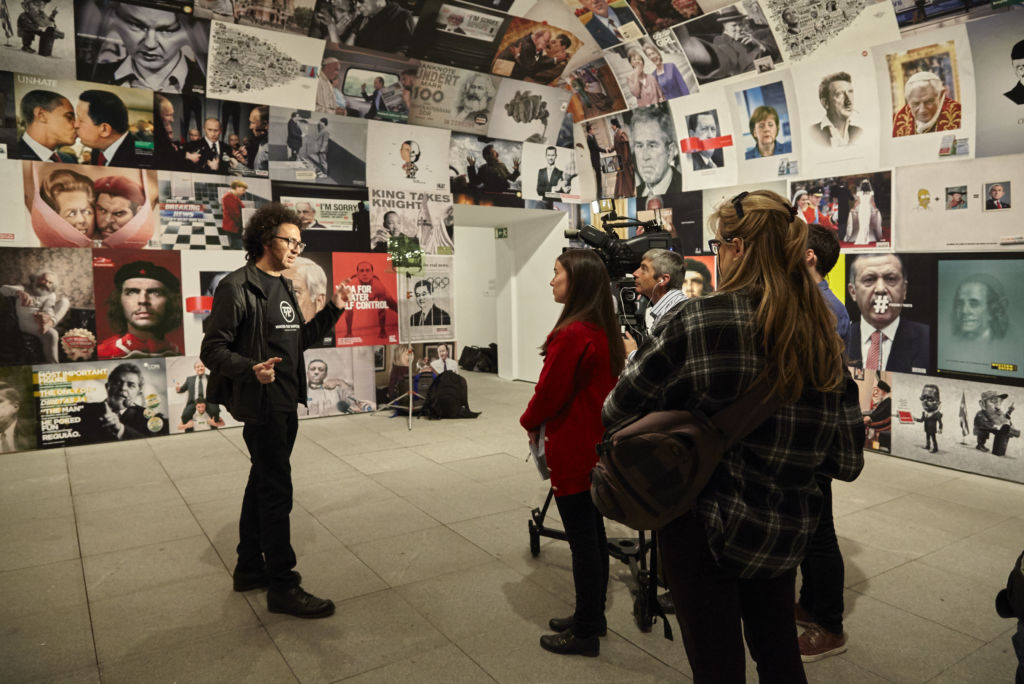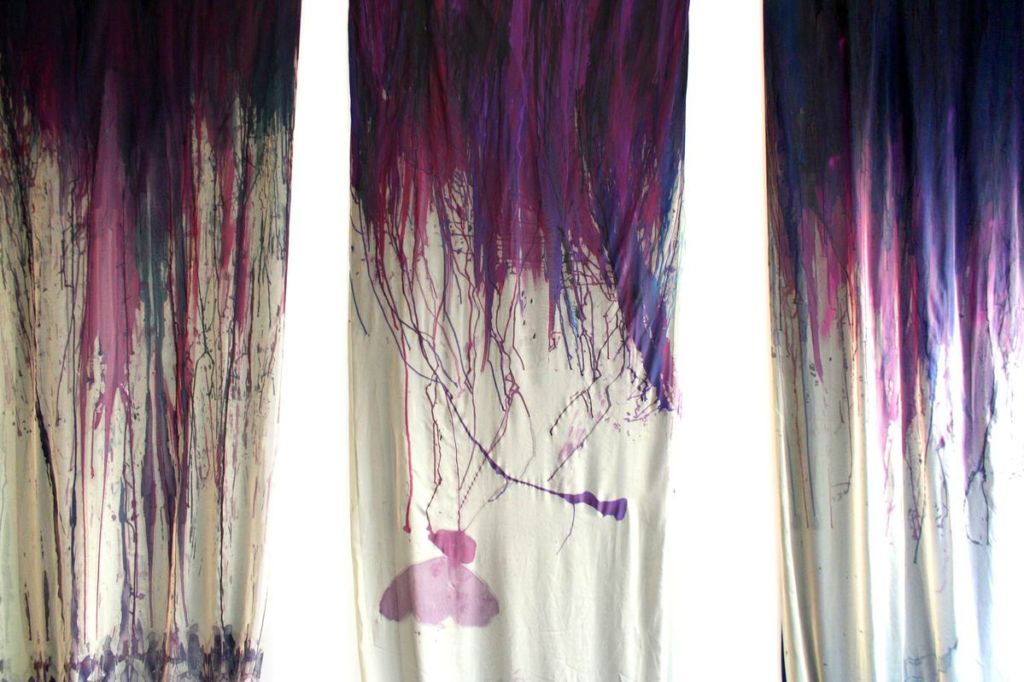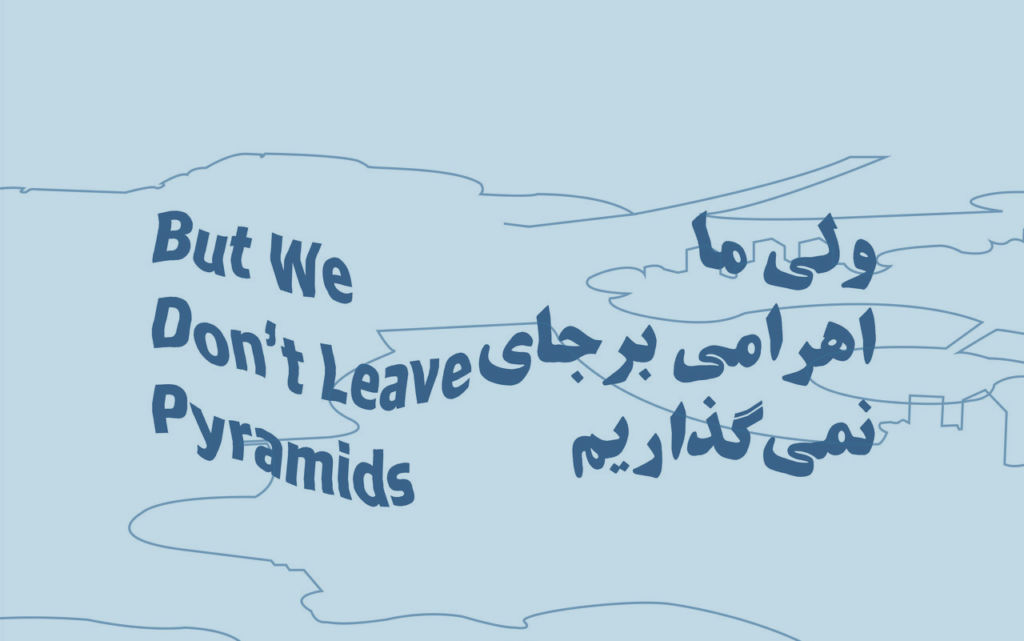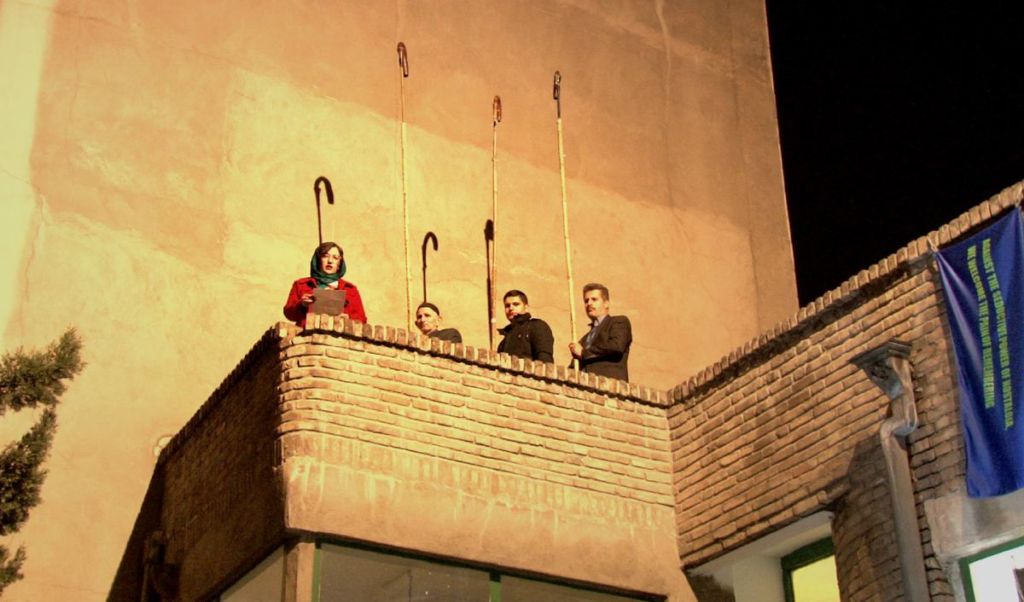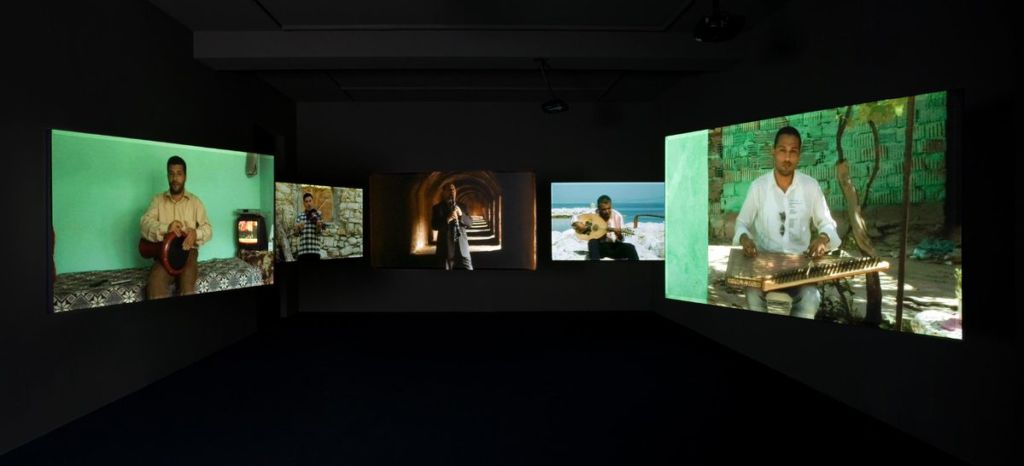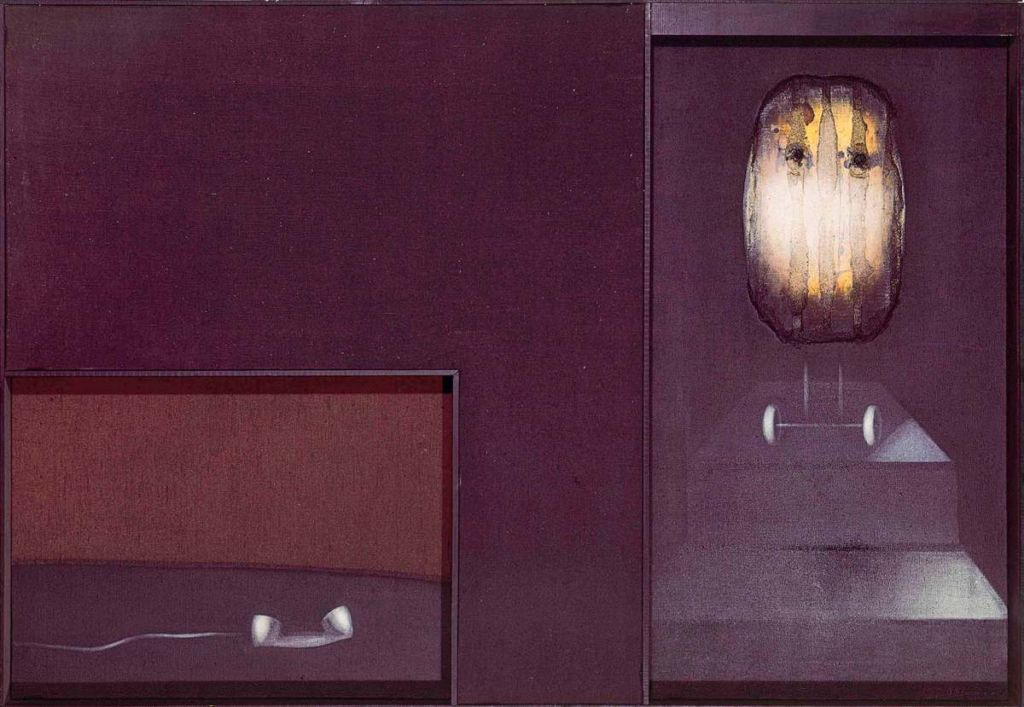On January 1, 2016, Chinese artist and dissident Ai Weiwei announced his intention to create a memorial on the Greek island of Lesbos in honor of refugees crossing the Mediterranean. “A lot of people have lost their lives under the waves […] we need a memorial,” he told during a press conference. A few weeks later, a photo taken by Indian Today reporter Rohit Chawla floods the media and online social networks. It shows the body of Ai Weiwei lying on his stomach, facing the sea on that very island of Lesbos. The image refers to Aylan Kurdi, the Syrian child whose lifeless body was found washed ashore on a Turkish beach on September 2, and whose death elicited an outpouring of emotion worldwide. Yet Ai Weiwei’s photo disturbs in that elicits no compassion whatsoever. Nothing works in this heavy and indecent staging of Kurdi’s drama, delimiting the often-ambiguous process of an artist who embraces like no other the complexities of his country.
The most famous event of this period remains “the Democratic Wall”, a veritable brick wall in the center of Beijing on which handwritten manuscripts or dazibao of political discussions opened at the end of the Mao era were glued between November 1978 and December 1979. The movement related to this place was spontaneous at first. It attracted a large crowd through improvised meetings. After being suppressed on December 6, 1979, the “Wall” is relocated to an outer borough, at the heart of a closed public park with fee entrance, meaning that visitation could be controlled. Ai Weiwei has a vivid memory of this “wall” that would later, in a certain sense, become his blog.
Despite pressure and intimidation from the authorities, Stars collective stayed in existence for about ten years.
As told by Ai Weiwei in Ai Weiwei Speaks with Hans Ulrich Obrist, Penguin, London, 2011, p.81.
Ibid.
Ibid, p.82.
“That’s like a blog before a blog,” remarks Hans Ulrich Obrist in the same interview, ibid, p.84.
The architecture of this studio/residence is inspired by the house that Austrian philosopher Ludwig Wittgenstein designed and had built for his sister between 1926 and 1928.
Ibid, p.90-91.
Ai Weiwei often reiterates that fake is pronounced in Chinese as fuck. Fuck Off is also the title of a group exhibition that he organized with art critic Feng Boyi in 2000 at the Eastlink gallery Shanghai, which brought together a large number of Chinese artists in the spirit of declaring independence from the esthetic dogma of the Chinese Communist Party, under the slogan: “The method of non-collaboration”.
This photographic action is repeated in years to follow before many other famous monuments: the Eiffel Tower, the White House, the Forbidden City, and others…
A dynasty that ruled China from 1644 to 1911.
In Ai Weiwei Speaks with Hans Ulrich Obrist, op.cit., p.46.
Following a trial that sparked much debate in China, Yang Jia was sentenced to death and executed.
A term coined by social media to designate these poorly built schools.
Their research is called “Citizen Investigation”.
In 2008, Ai Weiwei is one of 303 people to sign Charter 08, which demanded a more democratic Chinese government. Since then, the charter’s primary author, Liu Xiaobo, has been in prison.
A series of photographs from 2010 called One Tiger Eight Breasts.
Despite Ai Weiwei’s numerous criticisms, it seems that the Arab Spring in late 2010 is what led to his arrest. Ai Weiwei was not the only dissident to feel worried at the time. China undoubtedly feared uprisings might also occur at home.
Barnaby Martin, Hanging Man, The Arrest of Ai Weiwei, Faber and Faber, London, 2013, p.79.
In Ai Weiwei Speaks with Hans Ulrich Obrist, op.cit., p.47.
With the collaboration of Stefan Marbach and Li Xinggang, chief architect of the China Architecture Design & Research Group.
In Ai Weiwei Speaks with Hans Ulrich Obrist, op.cit., p.18.
In Ai Weiwei / Hans Ulrich Obrist, op.cit., p.22.
In Ai Weiwei / Hans Ulrich Obrist, op.cit., p.19-20.
In Ai Weiwei / Hans Ulrich Obrist, op.cit., p.22.
Also from the Qing dynasty (1644-1911).
In Ai Weiwei Speaks with Hans Ulrich Obrist, op.cit., p.95.
In China, 140 characters actually represent a much larger number of words.
In Entrelacs, U. Stahel, D. Janser, trad. J.-F. Allain, Steidl, 2012, p. 457; exhibition catalogue on Ai Weiwei’s photographic œuvre, organized by four art centers and museums: Fotomuseum Winterthur, Germany, (May 28 – August 21, 2011) ; Kunsthaus, Graz, Switzerland, (September 17, 2011 – February 5, 2012), Jeu de Paume, Paris, France, (February 21 – April 29, 2012), Kistefos-Museet Jevnaker, Norway, (May 20 – October 7, 2012).
Ibid, p. 457.
Ibid, p. 447.
Jed Perl, Ai Weiwei: Wonderful Dissident, Terrible Artist, in New Republic, February 2013.
In 2013, Ai Weiwei donates one hundred photos to the association Reporters Without Borders.
That year, Ai Weiwei was invited along with other artists (Dayanita Singh, Santu Mofokeng and Romuald Karmakar) to represent Germany at the Venice Biennale. All four are strangers to Germany, but each maintains a different relationship to the country. Ai Weiwei is a member of the Academy of Arts at the time and a tenured visiting professor at the Berlin University of the Arts (UdK).
In Hanging Man, The Arrest of Ai Weiwei, op.cit., p.178.
In Entrelacs, op.cit., p. 446.
Ai Weiwei’s blog and Twitter phrases/maxims are so famous now that some journalists call them weiweisms, just like Mao Zedong’s aphorisms.
It is hard to understand what “power” an artist might wield; or at least, we have never really tried to understand. One might imagine that this classification is, in part, the product of a kind of algorithm weighing the economic mass generated by the artist, the quantity of his exhibitions, and his media coverage.
A tendency that began when the weekly magazine of the German newspaper Die Zeit published a less-than-flattering review.
The Chinese government also has its own permanent trolls of online social networks, namely the “50 Cent Party”, soldiers dedicated to continuously posting pro-government messages, especially in times of social or political tension. These State agents receive 50 cents per post. Since the early 2000s, there has also been The Great Firewall of China meant to enforce State censorship of the Internet.
The term used by Anish Kappor in reference to this action.
The Cultural Revolution rested on getting opponents of the regime to renounce their views in the form of forced and humiliating statements. The only way for someone to survive was by modifying what they say. The exercise could be repeated depending on the communist factions in charge of the oppression. A person had to be subtle in order to follow the rhythm of evolving ideological sensitivities. Chinese authorities today continue this approach when arresting activists. In Hanging Man: The Arrest of Ai Weiwei, the artist details various ways in which he adapted his statements depending on the jailors before him.
The bulldozing of his Shanghai studio, for example, was perfectly documented and this documentation was published on all kinds of networks. He also encourages the production of books and films such as Ai Weiwei: Never Sorry (2012) by Alison Klayman (Special Jury Prize, Sundance Film Festival) or The Fake Case (2013) by Andreas Johnsen.
In Ai Weiwei Speaks with Hans Ulrich Obrist, op.cit., p.59.
“After Duchamp, I realized that being an artist is more about lifestyle and attitude than producing some product.” Entrelacs, op.cit., p 444.
In Ai Weiwei Speaks with Hans Ulrich Obrist, op.cit., p.7.
In Ai Weiwei Speaks with Hans Ulrich Obrist, op.cit., p.7.
An interpretation that Ai Weiwei agrees with himself, in Hanging Man, The Arrest of Ai Weiwei, op.cit., p.126.
In Hanging Man, The Arrest of Ai Weiwei, op.cit., p.32.
In Ai Weiwei Speaks with Hans Ulrich Obrist, op.cit., p.99.
Some analysts suggest that his “untouchable” nature is due mainly to his father’s status as one of the first heroes of Communist China and a personal friend of Mao Zedong.
In 2016, he shut down his own show in Copenhagen in protest against the Danish government’s decision to confiscate the personal effects of refugees.
He says it himself in M, the magazine of the French daily Le Monde dated January 9, 2016, p. 26: “In the first ten years, I was like someone walking down the mountain, going faster and faster. I couldn’t stop. I had to continue, not knowing where it would take me.”
Ai Weiwei Speaks with Hans Ulrich Obrist, op.cit., p.7-8.
But as statistics on Chinese growth in 2016 show, this confidence is relative, especially considering how the Chinese people have less tolerance now for the ecological disasters happening to the country.
The film’s French subtitle reads, “Can an artist change China?”
In Hanging Man, The Arrest of Ai Weiwei, op.cit., p.215.
Joseph Beuys (1921-1986) developed the concept of “social sculpture”, a piece meant to help each and every one of us develop awareness of subjects related to our concrete existence in the world.
In the aforementioned book, Barnaby Martin does in fact appear to be completely convinced of Ai Weiwei’s commitment.
Ai Weiwei’s father, Ai Qing, was a recognized poet who was one of thousands of Chinese intellectuals persecuted during the first purge of intellectuals in the late 1950s1 and then during the Cultural Revolution. Exiled for many years to the inhospitable regions of Heilongjiang and Xinjiang, Ai Qing is notably condemned to cleaning the public toilets. He is forbidden to write. Young Weiwei, born in 1957, is thus no stranger to humiliation. At 22 years old, in 1979, and with the Beijing Spring in full swing, he founds the Stars collective together with about ten other artists. It is one of the first anti-establishment groups, ten years prior to the events at Tiananmen Square2. Stars stands for the idea that anyone can produce his or her own light, countering the communist ideology that claims only Mao Zedong’s thinking can be the sole and unique source of light3. Ai Weiwei relocates to New York in 1982. There he lives as a young bohemian artist, working multiple odd jobs and encountering multiple kinds of people: “I wanted to be on top.”
On the way to the airport, his mother asks him, “What are you going to do there? – I am going home,” he replies4. At the time, New York is the capital of glamor and artistic success. He reads The Philosophy of Andy Warhol (From A to B and Back Again) by Andy Warhol (“I loved that book5.”) “Then Jeff Koons and others came out with such a fresh approach. I still remember Koons’ first show with all those basketballs in the fish tanks. It was just next door in my neighborhood, the East Village. And I liked that work so much, and the price was very low, $3,000 dollars or something. I was so fascinated by that6.” The few pieces he makes at the time reflect this neo-Dada spirit: a coat hanger in the shape of Marcel Duchamp’s profile (Hanging Man, 1985), a pickaxe handle combined with a violin (Violin, 1985), a pair of shoes grafted to one another (One Man Shoe, 1987). He also acquires a compulsion for photography: “I started to take a lot of photos, thousands of photos, mostly in black and white. I developed them ten years later. Taking photos is like breathing. It becomes a part of you7.”
Simple gestures
Ai Weiwei returns to Beijing in 1993 to be at the side of his dying father. He starts selling antiques and decides in 1994 to edit a publication-manifesto, the Black Cover Book, followed by the equally manifesto-like publications White Cover Book (1995) and Grey Cover book (1997). These books are the first of their kind to draw an inventory of Chinese art from that era. Through their uncluttered form, with elegant graphics and layout, and so-called “conceptual” content, but also through their “promotional” aspect, the books push Chinese art squarely into the realm of the contemporary, an esthetic category normally confined to the Western world. Together with investor Frank Uytterhaegen, he founds the Chinese Art Archives and Warehouse in Beijing in 1998. Part private gallery, part public art center, it is a critical place for distributing contemporary Chinese works which are just starting to attract major collectors. At the forefront is Uli Sigg, former Swiss ambassador to China for whom Ai Weiwei becomes a principal advisor. In 1999, Ai Weiwei designs a new studio in the city of Caochangdi, not far from Beijing8. “…I walked into this village and asked the owner of the village if I could rent some land. He said, ‘Yes we have land’, so I said, ‘Can I build something?’ He said, ‘Yes you can build.’ It was illegal, but he didn’t care9.” In 2003, he creates his company FAKE Design which he uses to produce numerous art, architecture, interior design and urban landscaping projects, including about twenty studio/residencies built next to his own, turning the neighborhood into a major attraction for galleries and artists10.
Parallel to this activity of directing a cultural-sector company, his personal artistic output starts to gain precision. He produces several pieces that are now considered icons of his esthetic vocabulary, such as the Coca-Cola logo painted on a series of ancient vases (Han Dynasty, 206 av. J-C – 220 ap. J-C, Urn With Coca-Cola logo paint, 1994), wherein the lessons of New-York Pop are applied to a Made in China way of thinking. He takes a picture of his wife, Lu Qing, on Tiananmen Square lifting up her skirt underneath a giant portrait of Mao, with some on-duty soldiers nearby (June, 1994). He also takes a picture of himself shattering an antique vase on the ground (Dropping a Han-Dynasty Urn, 1995) or giving the middle finger to Tiananmen Square on an empty, foggy day (Study of Perspective, Tiananmen Square, 1995)11. These are simple gestures, not to say simplistic, yet in light of the Chinese political and cultural context, they are quickly seen by the art world as iconoclastic and symbolic forms made by an artist looking to emancipate himself from the ancient and current dogma of his country.
On blogging and its effects
Ai Weiwei’s next move is to specialize in recycling ancient materials, like the circular sculpture made of 42 bicycles typical of pre-modernized communist China (Forever, 2003), or a forest of fake trees made out of wooden beams and pillars taken from dismantled Qing dynasty12 temples (Fragments, 2005). A few days into the twelfth documenta in Kassel, 2007, his outdoor installation (Template, 2007) made of 1,001 wooden doors and windows from destroyed Ming and Qing dynasty (1368-1911) houses, collapses from a violent gust of wind. The artist decides to leave it that way for the rest of the event, leaving the ruins to follow their own destiny. Ai Weiwei also has 1,001 Chinese tourists invited for a week-long visit to that same event, each carrying the same suitcase so that they are transformed into living sculptures to be encountered throughout the city. The action is called Fairytale. The public enjoys both the formal effectiveness of his installations and the narratives that accompany them.
Ai Weiwei’s work reaches a turning point in 2005 when he starts a blog. He takes great care to feed it non-stop, proudly declaring the following year that, “My blog is probably the most image-loaded blog internationally; nobody else puts up as many photos each day13.” Aside from posting photos, the artist also brings up his architectural or urbanism projects, his daily life, and international or local current affairs. It becomes the venue for his comments on the ethnic tensions opposing the Han and Tibetans in March 2008, followed by the Han and Uyghours in July 2009, as well as on the causes behind the assassination of six police officers in Shanghai on July 1, 2008, by Yang Jia, a young man apparently exasperated by the muscular custody officer in the police precinct where the agents worked14.
From earthquake to arrest
The earthquake in Sichuan on May 12, 2008 presents an opportunity for him to wage his own battle of Hernani. Moved by the deaths of thousands of children in “tofu schools15”, shoddily constructed by local authorities guilty of negligence and corruption, he launches a website to report the body count. He enlists dozens of volunteers to investigate throughout the region and collect people’s stories16. But the investigations collide with the disinformation being spread by local authorities and by a thorough police beating in August 2009 that lands him an operation for skull trauma. The same year, he makes an installation for the facade of Haus der Kunst in Munich using 9,000 backpacks resembling those worn by the young victims, forming an immense banner quoting, from the mouth of one mother: “For seven years she lived happily on this earth” (Remembering, 2009).
Tensions escalate between Ai Weiwei and the Chinese authorities. On November 2, 2010, technical agents from the State deliberately destroy his studio in Shanghai. At a banquet five days later, the artist offers ten thousand river crabs to all the people that have supported him in his views. The Chinese pronunciation of “river crab” is homonymous with the term “harmony”, a keyword in communist propaganda. Internet users adopt the word for this tiny crustacean with irony as a metaphor for censorship. In December, he makes a list of all the victims of a mysterious fire in Shanghai. On December 3, police agents prevent him from leaving for Oslo, where he planned to attend the award ceremony for the Nobel Peace Prize, being awarded to Liu Xiaobo17. Ai Weiwei is finally arrested the following April 3 as he is about to embark a plane for Taipei via Hong Kong. Eight of his assistants join him in custody, which lasts 81 days.
He is released on bail on June 22. The authorities demand he pay 15 million yuan, equivalent to 1.7 million euros, accusing him of fiscal fraud, pornography (for his naked self-portraits accompanied by several women18) and bigamy (his recent child was born from an extra-conjugal relationship). The sentence is confirmed in September 2012. In the span of a few months, Ai Weiwei receives 9 million yuan from a variety of supporters. He is under house arrest. The case makes noise all around the world19. Ai Weiwei later declares, “I didn’t pay much attention because for a long time I know that normally they wouldn’t touch me20.”
Official blogger and advisor
This grants him the status of dissident, turning the artist into a hero of the fight against his country’s inflexible authority. His pieces and actions are undeniably effective; there’s no doubt that their ability to make a show out of political hyperbole are a factor in destabilizing Chinese authorities. But trouble is, one gets the impression that the artist is going for a game of cat and mouse with said powers. In effect, Ai Weiwei’s blog takes up an offer from the very official Internet portal www.sina.com, which belongs to Sina Corp, one of the principle artisans of State propaganda.
In 2008, Ai Weiwei does not hesitate to say this about the blog: “I find that this is the most interesting gift to me, or even to China…21.” He makes this statement on October 13, 2008, while also denouncing authorities in the aftermath of the Sichuan earthquake and the Yang Jia case. Is Ai Weiwei being ironic or does he truly believe he can escape censorship by seeking protection from Sina Corp? Regardless, the blog is shut down in spring 2009.
Ai Weiwei also briefly serves as a primary advisor on the construction of the Beijing national stadium, the famous “Bird’s Nest” by architects Jacques Herzog and Pierre de Meuron22. He abandons the project a few months before its inauguration out of fear of ideological misrepresentation. But how could he imagine for a second that a building project of this kind, one that would become the beacon of the Olympic Games, could be conceived without any ideology in a country where propaganda controls everything? His return to lucidity does not prevent him from building his studio in Shangai (nearly 2000 m² in size) in early 2008 upon invitation from local authorities looking to develop – in the same spirit as Coachangdi – a cultural neighborhood within a new housing zone. By twist of fate, the studio was destroyed under the pretext of illegal construction.
Luxury homes, the desert, speculation
The most disturbing moment in this game is undoubtedly the Ordos 100 project, launched in 2006 by Cai Jian, the self-proclaimed “direct descendant of Genghis Khan”. Once a farmer and then the largest owner of real estate, he became a multimillionaire thanks to the yogurt industry, and is a close friend of Hu Jintao, President of the Republic at the time and General Secretary of the Chinese Communist Party. The pharaonic project was intended to create a residential neighborhood in the Kangbashi municipality, not far from the city Ordos, in the heart of Inner Mongolia. The specifications called for each house to have a surface area of 1,000 m2 and an indoor pool, each sold at a fixed price of 1.5 million dollars. The very same Jacques Herzog and Pierre de Meuron are invited by Cai Jian to design the operation. The architects delegate the project coordination to Ai Weiwei, who comes up with the idea of inviting one hundred architects from all over the world to build “an interesting and heterogeneous collection of buildings, something quite unique in China,” in the artist’s own words23. Not a single Chinese architect is selected. Once again, a project of this magnitude would never see the light of day without the blessing of the authorities. Ai Weiwei confirms it himself: “It is very important that the government, who financed this project, did something to show that society doesn’t have to be all the same all the time24. […] In the end, the municipal authority’s strategy was very enlightened, because by allowing this collaboration to go ahead they have attracted a lot of national and international attention to the city. The price of land in the neighbourhood of the park, which until a few years ago was used for agriculture, has risen a lot. A lot of people from universities, journalists, and architects have already come to visit the site,” he declares on September 12, 200625. Here he goes well beyond administrative and political acquiescence; he demonstrates undeniable complicity with the established power by viewing the economy as something wild and voracious that erects new cities in record time to satisfy the needs of unbridled growth. According to Ai Weiwei, the project would be over in a year and a half. “For China, a year and a half is an eternity. We had planned to be finished in fourth months26.” These remarks, made in 2008, are strange considering how it seems that construction only just begun. The only remnants of these luxury villas today are a few carcasses lost in a desert of sand27. Cai Jian abandoned the project after realizing it wouldn’t generate profits. And anyway, starting in 2008-2009, Ai Weiwei was one again someone to avoid, in the eyes of the authorities.
100 million seeds
This propensity for excess is visible in Ai Weiwei’s pieces. His installation in 2007 using 1,001 ancient chairs 28 (Fairytale Chairs) was already tending toward the monumental. That same year, he abandons Chinese Pop to tackle Vladimir Tatline’s Monument to the Third International as a symbol of a past in which “many things stayed utopian rather than becoming a reality29.” The piece imposes in every sense of the word (Fountain of Light). The 42 bicycles from 2003 (Forever) become 1,200 in 2011, as gleaming as they are perfectly aligned one next to the other, stacked, saturating the space30. Three years later, he reuses the assemblage of bicycles to create a colossal chandelier (Stacked, 2014). But it is with Sunflower Seeds in 2010 that the gigantism reaches its definitive architectonic value. Conceived for the Turbine Hall at the Tate Modern in London – the ultimate temple to artistic excess – the installation comprises ten tons of porcelain sunflower seeds, roughly 100 million in total. With them, Ai Weiwei references a Mao Zedong metaphor in which the people are meant to turn to him “as sunflowers turn to the sun”. The project is financed in large part by the agro-industrial giant Unilever. For more than a year, 1 600 workers are busy producing the seeds in workshops at Jingdezhen (Jiangxi province), a city reputed for the quality of its ceramics, but marked by a crisis in industrial development.
It is considered an act of “empathetic solidarity” for “the economic survival of a manual skill in decline”. And yet three years later, Ai Weiwei tells journalist Pierre Haski, writing for Rue 89: “China was only able to develop by taking advantage of the results of Western civilization. It copied, and then became a country of cheap manual labor to manufacture products that the West no longer wants to make because it’s bad for the environment or because it costs too much. The West today is living off the Chinese tragedy, and if China isn’t aware of that, it’s out of stupidity!”
Quick and viral
Directly after his release, Ai Weiwei increases his online presence not through his blog but on Twitter, namely by using VPN (virtual private network) technology to counter any censors. The information is immediate and even more viral. Texts limited to 140 characters are inherently more enigmatic31. Ai Weiwei no longer has the time for deep investigations: he gives his opinion on bits of everything and positions himself as the herald of freedom of expression, for example by siding with the Arab Spring. This daily campaign (a hundred tweets a day and nearly 75,000 followers daily in 2012) occurs side by side with the massive publication of his photos. “I’m not really interested in photography and I don’t really care about the subject of my photos32.” “He’s just happy making a lot of them,” adds Carol Yinghua Lu in an article written about the subject33. Ai Weiwei takes it even further: “Photography is a deceitful and dangerous medium […]. It neither records nor expresses reality. It sucks authenticity out of the reality it represents and only separates it even further from that reality34.” This unequivocal stance comes at the height of his intense use of photography, not only in his activist web projects, but also in his artistic production. He even goes as far as to accept that four institutions organize a retrospective of his photographic works in 2011 and 2012. As emphasized by journalist Jed Perl in an article dated February 201335, these exhibitions have the merit of showing the extent to which his photographs are stripped of all esthetic concerns, aside perhaps from producing messages that can be summarized in a tweet36.
The logic of propaganda
Ai Weiwei is under house arrest until July 22, 2015, by Chinese authorities who have accused him of crimes and hope to sentence him. He is thus forbidden from leaving the country for four years. And yet his works are present in numerous international events. It all culminates at the Venice Biennale 2013, where he is not only showing in a group exhibition at one of the city palaces, but also occupies the German Pavilion37 with a sculpture made of 886 entangled Qing dynasty stools (Bang, 2013) and rents out a church for an installation reenacting the conditions of his 81 days in detention (S.A.C.R.E.D., 2011-2013). There are several actors in the piece, including one who plays him. The actor is flanked from evening till morning by two guards who follow him to the most intimate recesses of his cell. It is deliberately staged for maximum theatricality; the visitor is made to feel self-conscious both at the sight of the artist’s humiliation as at the voyeurism of the play and its mockery of the truth.
That same year, 2013, the daily British paper The Guardian asks: “Is Ai Weiwei still an artist?” A few weeks after being released38, Ai Weiwei declares, “I consider all of this to be my artwork.” And he adds: “Art must be a tool that allows information to circulate39.” Artworks and life acts merge to form a single medium, pushing a return to the propagandist logic of the 20th century avant-garde, futurism and Dada in particular, and of the totalitarian regimes whose mechanisms Ai Weiwei learned to master at a young age, when aphorisms from Mao’s Little Red Book were beaten into his head40. In this spirit, he launches, a veritable smear campaign against the Lego company in autumn 2015, for refusing sell him enough bricks for an installation planned at the Melbourne Museum in Australia. The company simply argued that it “does not support political projects.” Which is absurd considering that a year earlier, it helped the artist with an exhibition at Alcatraz in the USA. Upon discovering that Lego is collaborating with Chinese authorities on the construction of an amusement park in Shanghai, Ai Weiwei accuses the company of taking sides. He launches a crowdfunding campaign for Legos, and after a few days, announces that he gathered enough for his project. Twitter takes care of the rest. On social media, Lego is the target of thousands of spiteful comments. The company issues an apology and promises never to do it again.
One-way ethics
Again, Ai Weiwei’s proves his activism is effective. But why not be as uncompromising with the companies that support him? Unilever, for example, is regularly attacked on the Internet for paying low wages to its workers or for buying up agricultural lands in the poorest countries for next to nothing. When in early 2016, he shows his work in Paris at Bon Marché, the prestigious department store belonging to LVMH group, he seems to forget that China plays an essential role in the seamless (and shameless) growth of the luxury goods industry. Finally, and above all, Ai Weiwei has neglected to think about the consequences of his partnership with the capricious Cai Jian, who himself encompasses the troubling and most impudent symptoms of commercialism.
These shape-shifting ethics can certainly be justified by Ai Weiwei’s dependence on unconditional support from the art world… and its economics. Museums, art centers, foundations, donors, galleries and the art market in general, they all function as a sprawling amplifier and assembly line for an array of attitudes and projects. Since his detention in 2011, the year that Art Review magazine named him at the top of their Power Art List41, the artist has turned into a star whose activity has taken a frenzied pace. Very little commentary is made on his way of thinking and producing.
The interviews between him and Hans Ulrich Obrist reveal how the latter is in total fascination of the former. Although Obrist often brings up the artist’s architecture, design or urbanism projects in China, he never once asks the artist about his relationship to the Chinese powers that be. When the occasional article proves to be critical, such as Cédric Aurelle’s piece for journal 02 (spring 2016, #77), the artist prohibits them from using any photos of his work42.
A clear conscience and symbolic hypertrophy
Of course it is difficult to criticize an artist for having convictions and defending honorable causes. Ai Weiwei’s battles are all the more heroic in that he often puts his own liberty and even his health on the line in order to win them. Few contemporary artists can claim such commitment. Clearly his communication tools (notably the Internet and social media) are the most effective ways for him to oppose the massive ideological and political steamroller that is the Chinese government: and so he fights propaganda with propaganda. His growing fame is an incredible vector for communicating against a state machine endowed with formidable oppressive strength43. And yet, we still have the impression that Ai Weiwei is increasingly blinded by his determination, or rather, by his success. This blindness prevents him from seeing that the Power Art World of which he is now a part is exploiting him to buy back their clear conscience, and that for the most part, the real heads of the art-world family are hardly aware of the problems in Chinese society or in any society for that matter, because they live in a speculative bubble, far away from reality.
Big and small compromises with the art world aside, his other blind spot resides in the symbolic hypertrophy of his messages, delivered with more and more frequency. The photograph on the beach of Lesbos is the best example: the small lifeless body of Aylan Kurdi is replaced by the fully alive, corporeal mass of Ai Weiwei. The spontaneous poignancy of a picture taken without artifice clashes with over-the-top staging. As a fine connoisseur of art history, Ai Weiwei know that dramatic representation is not so easy. Similarly, when he wraps the columns of the Konzerthaus Berlin in 14,000 life vests collected from the Mediterranean shores, and then asks guests to wear a similar kind of vest for a gala evening, is he not giving in to the bid for gestures and signs that ultimately stifle the content of his struggles? In September 2015, he participates with British-Indian artist Anish Kapoor in an over-mediatized solidarity march for refugees, a “walk in empathy44” in London, like two prophets wrapped in a blanket. Does he not realize that by drawing attention to his stage presence, he is detracting from the essentials, that is, the battles and causes he is there to defend?
The opposite version of Huineng
In the end, Ai Weiwei himself has brought these antagonisms into this adventure. An adventure that started in the meanderings of a Cultural Revolution that continues, fifty years in, to weigh heavily on Chinese society. In those somber years, he learned to resist everything and to adapt his positions according to the succession of people and contexts45. His experience in New York taught him the mechanics of artistic success, amongst other things, and the economic and media strategies required46. By reading Andy Warhol, his apprenticeship in self-control and self-image is complete. “I always take action when it’s needed47.” He grants himself the status of a conceptual artist, distant and sparing, like his much-admired Marcel Duchamp48, and yet also reveals himself as a tireless producer for whom “theory always come later49.” “We are a productive reality,” he states50. Quote as he may the master of absurdist Zen thinking, Huineng, he often takes the ancient monk’s word too literally. Indeed, he gave his architecture and design agency FAKE the minimal slogan: “Make It Simple!” while continuing to develop grandiose, if not some outright pompous, projects. “He is a lover of paradox,” writes journalist Barnaby Martin51.
Contrary to countless other dissidents who were, for the most part, imprisoned for years, or even just plainly disappeared; Ai Weiwei has not been reduced to silence. He chalks this relative clemency up to his popularity. Wen Jiabao, then Prime Minister, was afraid of how Western leaders would react during his visits to Germany and Great Britain in the summer of 201152. And so Ai Weiwei does not fit the profile of an isolated and solitary dissident. He is bulimic and hungry to occupy every territory, all the time. “My favorite word? It’s ‘act’53.” He cultivates multiple networks throughout the planet. Perhaps this is why he thought himself “untouchable54” at the time of his arrest.
He considers himself the sworn opponent of many injustices55, but shows himself incapable of critical distance from an art world that is itself prone to its own downward spiral. He has in fact become the star he dreamed of becoming in 1979, within a group of the same name, an influential source of light that turns away from the unique thinking of the Great Helmsman. Yet although his celebrity helps carry his voice, it also imposes a hyper-presence that is incompatible with any analytic evaluation of his own actions56.
While waiting for a new language
“I’m sure, once somebody looks at my blog, they start looking at the world differently without even knowing it. This is why the Communists, from the beginning, really censored everything. They are the sole source of propaganda, and have been very successful at it for the last fifty years. But because of China’s opening, and because of the economy of the world, they won’t survive. They can’t survive, so they have to allow a certain amount of freedom, but this cannot be controlled once it is allowed57.” This prophecy from 2006 has yet to come true, even if everyone believes that the authorities’ stronghold on personal freedoms will one day come to an end. As long as there is positive economic growth, the Communist power can continue to claim that their program and methods are necessary58.
In her film on Ai Weiwei, Never Sorry, American director Alison Klayman asks herself if in 2012 the artist will change the course of his country59. She forgets that the only way for an artist to change society is to invent a new form of art, a new language. This is the lesson of the twentieth century artistic avant-garde, in any case, and Ai Weiwei has learned his lessons perfectly. Does he not declare that, “any type of revolution in art or literature or in reality is always about how many new concepts are being introduced. And the words are the basis of that. The new vocabulary is the most essential thing60.” And yet, up till now, the artist Ai Weiwei hasn’t invented anything; he has been happy to utilize the rather classical formulas of twentieth-century art, to which he adds a social dimension, much like German artist Joseph Beuys in his day61. The only difference lies in his heavy use of new communication technology to get the messages behind his work and his actions out to the largest possible public.
Ai Weiwei seems above all not to realize that his work is produced in a veritable climate of competing forms and media, perfectly echoing a Chinese approach to economics characterized by relentless expansion. Even the subjects he addresses in many of his pieces, with the continuous recycling of materials thought to represent the brutality with which China has erased its own (even recent) history, end up identifying with the structural and ideological dialectics of his country. And so Ai Weiwei embodies better than anyone the complexity of contemporary China, an entire country immersed since the early 1980s in a double bind of the State, torn between the utmost directive communist ideologies and an ultra-liberal economy where unfettered individualism has taken on a quasi-religious dimension.”Like one of the Furies of Greek myth, he is both the child and the nemesis of the current order,” writes journalist Barnaby Martin, despite everything a fervent admirer of the artist62.
Translation by Maya Dalinsky
Thanks to Cédric Aurelle
